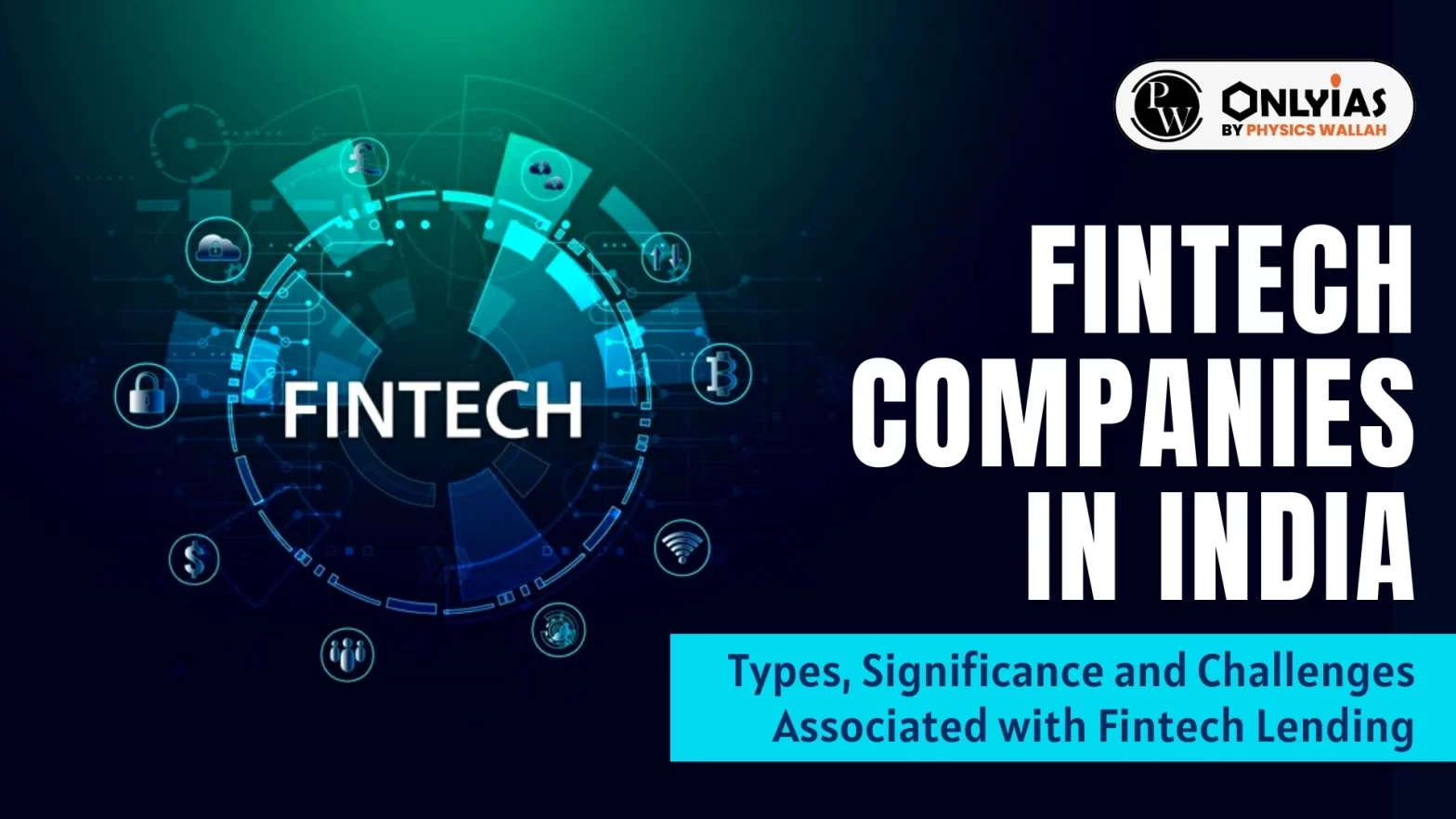Context: The Reserve Bank of India (RBI) recently directed banks and non-banking financial companies (NBFCs) to increase their risk weightage against loans from 100 per cent to 125 per cent.
| Relevancy for Prelims: Financial Technology (FinTech), Nonbank financial companies (NBFCs), RBI, and Central Bank Digital Currency (CBDC).
Relevancy for Mains: Fintech Sector and Fintech Companies in India: Types, Significance, Challenges Associated with Fintech Lending, and Way Forward. |
What are Fintechs?
- Fintech, a combination of the terms “financial” and “technology,” refers to businesses that use technology to enhance or automate financial services and processes.
Fintech Companies in India and their Common types
- Payment: These offer digital payment solutions, such as mobile wallets, online payment gateways, and peer-to-peer (P2P) payments. Ex-Bharatpe
- Lending: These offer digital lending solutions, such as personal loans, business loans, and credit cards. Ex-CRED
- Insurance: These offer digital insurance solutions, such as health insurance, life insurance, and car insurance. Ex-Digit Insurance
- Investment: They offer digital investment solutions, such as stock trading, mutual funds, and cryptocurrency trading. Ex-Zerodha
Fintech Companies in India: Significance
- Fintech Sector: India is home to the third-highest number of fintechs globally, with more than 9,000 fintechs, holding a 14 per cent share of Indian start-up funding.
- Adoption Rate: As per the Economic Survey 2022-23, fintech companies in India witnessed an 87% adoption rate across varied user bases as opposed to the global average rate of 64%.
- Digital Transactions: Fintech companies in India account for 70 per cent of digital payment transactions, marking a twofold rise in their share during FY22 compared to FY19.
- Financial Inclusion: More than 10 million people and small businesses gained access to savings accounts, insurance, investment options, and credit facilities through mobile-based services and digital platforms.
- Democratising Lending Process: Peer-to-peer lending platforms are democratizing lending, providing individuals and small businesses with access to funds without the need for traditional financial institutions.
- Rise in Public Investment: Investment platforms and robo-advisors are making investing in stocks, mutual funds, and other financial instruments more accessible..
Government Support for Fintech Companies in India
- JAM Trinity: JAM Stands for Jan Dhan Yojana, Aadhaar and Mobile connectivity.
- India Stack: It is a set of APIs that allows governments, businesses, startups and developers to utilize unique digital Infrastructure to solve India’s hard problems towards presence-less, paperless, and cashless service delivery.
- UPI (Unified Payments Interface): The advanced mobile app-based payment system is the multiplier force behind the Fintech revolution in India.
- Digital Rupee: Central Bank Digital Currency (CBDC) or digital rupee is an electronic version of cash helping accelerate the growth of the FinTech market in India.
- Open Network for Digital Commerce (ONDC): It supports the digitization of small businesses by linking them with a payments and logistics infrastructure.
Challenges Associated with Fintech Lending
- Cyber Attacks: The increasing digitization of financial services has increased the risks of cyber threats.
- In 2022, a total of 13.91 lakh cases were reported.
Continue Reading: NCRB Report 2022 On Crime In India
- Illegal Digital Lending: The ease of access to fintech loan apps has led to a rise in numerous instances of harassment, unethical recovery practices and suicide linked to unregulated lending apps.
- Financial Illiteracy: There is a lack of necessary digital exposure and adequate digital knowledge to understand the risks associated with online transactions.
- Infrastructural Issues: Due to network/ connectivity problems in rural areas, online transactions are more prone to interruptions and slower response times, leading to security threats.
- Data Privacy Issues: The RBI has mandated that all financial institutions conduct Know Your Customer (KYC) verification for each customer.
Way Forward
- Strengthening the Cybersecurity Infrastructure: Fintech companies in India can collaborate with local law enforcement agencies to address cyber threats specific to the region.
- Improving the Cybersecurity of payment infrastructure in rural India: Fintech applications should have robust security features, including multi-factor authentication, encryption, and biometric recognition.
- Addressing Infrastructural issues: Given the intermittent internet connectivity in rural areas, fintech companies in India should enable offline access to financial services simultaneously.
- This will ensure that users can perform essential transactions with limited or no internet connectivity..
- Digital Literacy Programs: Fintech companies in India should invest in digital literacy programs to educate rural users about the risks and best practices associated with online transactions.
- Creation of a unified regulatory framework on connected lending: As suggested by RBI, this must be created to regulate connected lending – where a borrower might influence the lender’s decision – for all its regulated entities.
- Compliance Program for Fintechs: Fintech companies in India should develop a compliance program to ensure they comply with all applicable laws and regulations.
Conclusion:
Fintech companies in India have done a lot to include more people in the financial system and make things digital. But, to keep growing in a good way, they need to deal with issues like keeping things safe online, fixing infrastructure problems, and helping people understand money better.
![]() 27 Dec 2023
27 Dec 2023

